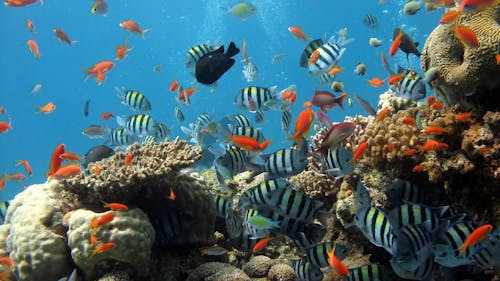FEHON: Interview with undergraduate climate researcher
Column: Climate Corner

For those who care about climate change, it is easy to get lost in the amounts of greenhouse gas emissions from various different sources and sectors, so it is good to take a step back and remember why we are reducing our global (and university) emissions in the first place.
The list of effects climate change has had on the world as we know it is a long one, but one popular and important impact is those occurring to our coral reefs.
Before I go any further, I just want to point out that corals are not just pretty things to look at on your favorite “The Blue Planet” episode. They are environmentally, economically and societally important. And yeah, they sure as hell are pretty!
More than 25 percent of marine species rely on coral reefs at some point in their life. Roughly half a billion people around the world rely on reefs for food, coastal protection and income. In economic terms, that is $5.7 billion raked into the global economy from all our fisheries.
How could these be so important? They provide an excellent infrastructure for a thriving marine ecosystem, like the buildings of a bustling city.
Hell, if you snorkel on an abandoned oil rig, you will see a thriving marine ecosystem due to its structure. If an old, rusty metal can yield returns like that, it makes sense that these living substantive organic structures are so good at concentrating life!
But these cities of the shallows are seriously at risk of fading away into extinction due to climate change. When corals are exposed to high temperatures for too long, they expel their much needed algal symbiote, “bleach," and die.
With 90 percent of our planet's warming going to our oceans so far, we have already lost more than 50 percent from bleaching and could lose 90 percent by 2030.
This is not the whole story though. This week, I talked with Dan Liu, a School of Environmental and Biological Sciences junior and biotechnology student, to get a firsthand perspective of coral bleaching research from a Rutgers undergraduate. He works in the Bhattacharya Lab, investigating information about corals that could help save them.
Fehon: “Let's start with the lab in general, what's going to happen (due to) this research”?
Liu: “So we work in bioinformatics. We use computers to analyze DNA sequences, and our recent focus has been, you know, corals, trying to understand more of how they work so that we can save them … The biggest picture I can give you is something called the coral base … (The Bhattacharya Lab) wants to create a tool called a coral hospital, where essentially it's kind of like a hand-held device, and if you break off a chunk of coral and then you put it inside … you can get an idea of the overall health of the system.”
Fehon: ”Is that a genomic tool”?
Liu: “So, yeah … some corals are … more resistant to coral bleaching and we don't know why. So a lot of what we've been looking at is kind of subjecting corals to heat shock and then kind of observing how the gene transcription or expression changes … So the idea was to get an idea of what is being expressed during heat stress and what kind of genes are being activated. And if we could try and identify the specific gene that allows this one coral — basically differentiates it and makes it more resistant to bleaching.”
Fehon: “And then the overall goal with that information … would be actually seeding the environment with these (corals) right”?
Liu: “There (are) already coral farms … So, if anything, I suppose this tool can be used to aid in designing better coral farms and just getting an idea of coral populations.”
That is the big picture, but as an undergraduate, what was Liu's role in all of this? He broke out his coding skills to compare coral sequences with this end goal in sight.
Liu: “I was looking for orthologs … basically corals are related right, and you know even (with) humans compared to fruit flies or mice, they're a lot of genes we have in common. So the first step before identifying what's new (like genes for bleaching resistance) is identifying what they have in common.”
But then there is always some more messy work that goes along with the undergraduate research experience. Liu's challenges came in the form of actually isolating the genetic material from the corals.
Liu: “So we use like shears to break off chunks of coral and then we would use a mortar and pestle to break it down even more. And then the whole time we have to pour liquid nitrogen over it so that it doesn't start liquefying … very laborious process.”
A very annoying process for a very cool and significant outcome. This story serves as a reminder of how we can frame our Rutgers climate action plan. First, in seeing how emissions are actually affecting the environment, but also how Rutgers' faculty, staff and students can put their analytical skills to the test in the name of climate change.
Nolan Fehon is a School of Environmental and Biological Sciences junior majoring in marine biology. His column, "Climate Corner," runs alternate Thursdays.
*Columns, cartoons and letters do not necessarily reflect the views of the Targum Publishing Company or its staff.
YOUR VOICE | The Daily Targum welcomes submissions from all readers. Due to space limitations in our print newspaper, letters to the editor must not exceed 900 words. Guest columns and commentaries must be between 700 and 900 words. All authors must include their name, phone number, class year and college affiliation or department to be considered for publication. Please submit via email to oped@dailytargum.com by 4 p.m. to be considered for the following day’s publication. Columns, cartoons and letters do not necessarily reflect the views of the Targum Publishing Company or its staff.



